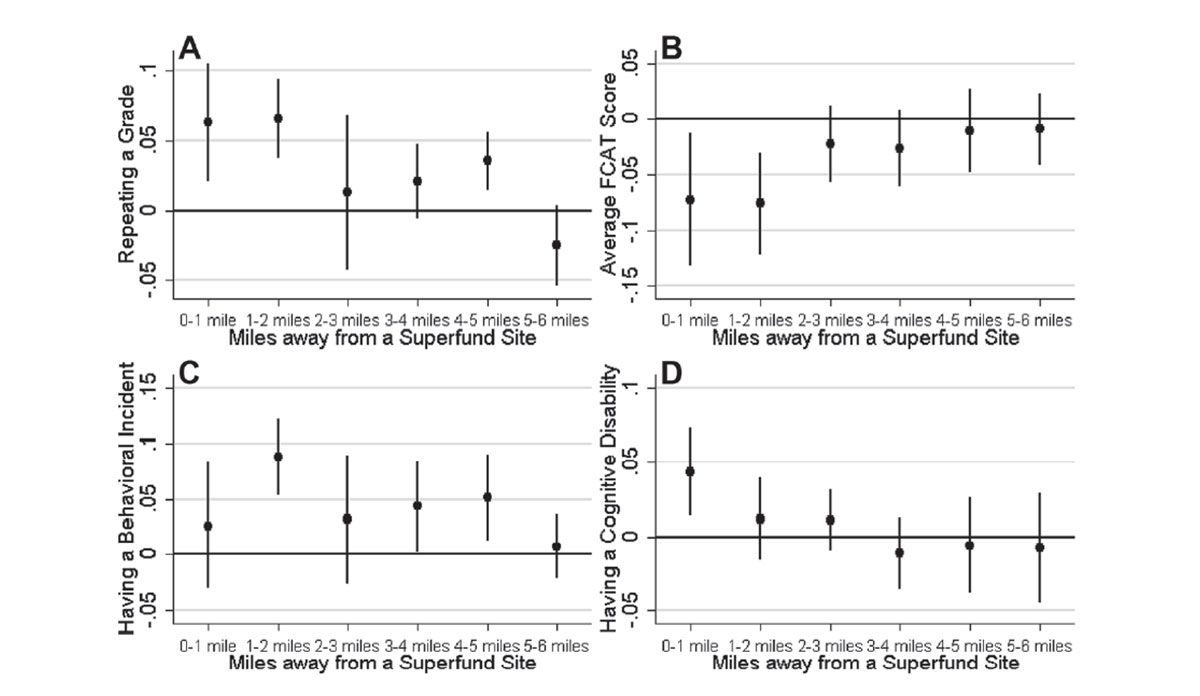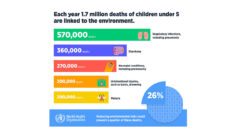Superfund is the largest federal program for toxic waste cleanup in the United States. More than 15,000 Superfund sites are scattered across the country, and include landfills, military bases, and manufacturing plants. Toxic chemicals at these locations can enter the air, water, and soil, and affect nearby residents. More than 73 million people in the US live within three miles of a Superfund site. Nearly half are racial minorities.
The prenatal period is an especially sensitive time to be exposed to toxic chemicals. A research team led by Dr. Claudia Persico examined how exposure to Superfund sites while in the womb affected children’s cognitive outcomes later in life. The team compared outcomes between siblings – those who were conceived before or during Superfund cleanup to those who were conceived after cleanup was finished. Their study included Superfund sites in Florida remediated between 1993-2002. They accessed data from Florida public school records, the American Community Survey, and the Environmental Protection Agency (EPA).
Siblings who were conceived before cleanup were more likely than their younger siblings (born after cleanup) to repeat a grade, have a school behavioral incident, and score significantly lower on state tests. As the graphs show, these negative outcomes were most prominent among children who lived closest to the sites. For example, panels A and D illustrate how children living one mile away from Superfund sites were more likely to repeat a grade and have a cognitive disability. These effects persisted even after accounting for potential environmental changes, such as school quality, maternal characteristics, and neighborhood composition.
Further, the researchers found significant negative outcomes at all Superfund sites. While lead is well-researched and often present in these areas, other harmful and lesser-known toxicants may have contributed to the observed negative impacts on children’s health.
The US government must prioritize cleanup of Superfund sites to protect the health of all residents, particularly children. If the EPA’s commitment to advancing environmental justice is to be fulfilled, then focusing on remediating sites near communities of color is the necessary next step.
Databyte via Persico, Claudia & Figlio, David & Roth, Jeffrey. (2019). The Developmental Consequences of Superfund Sites. Journal of Labor Economics. 38. 10.1086/706807.














